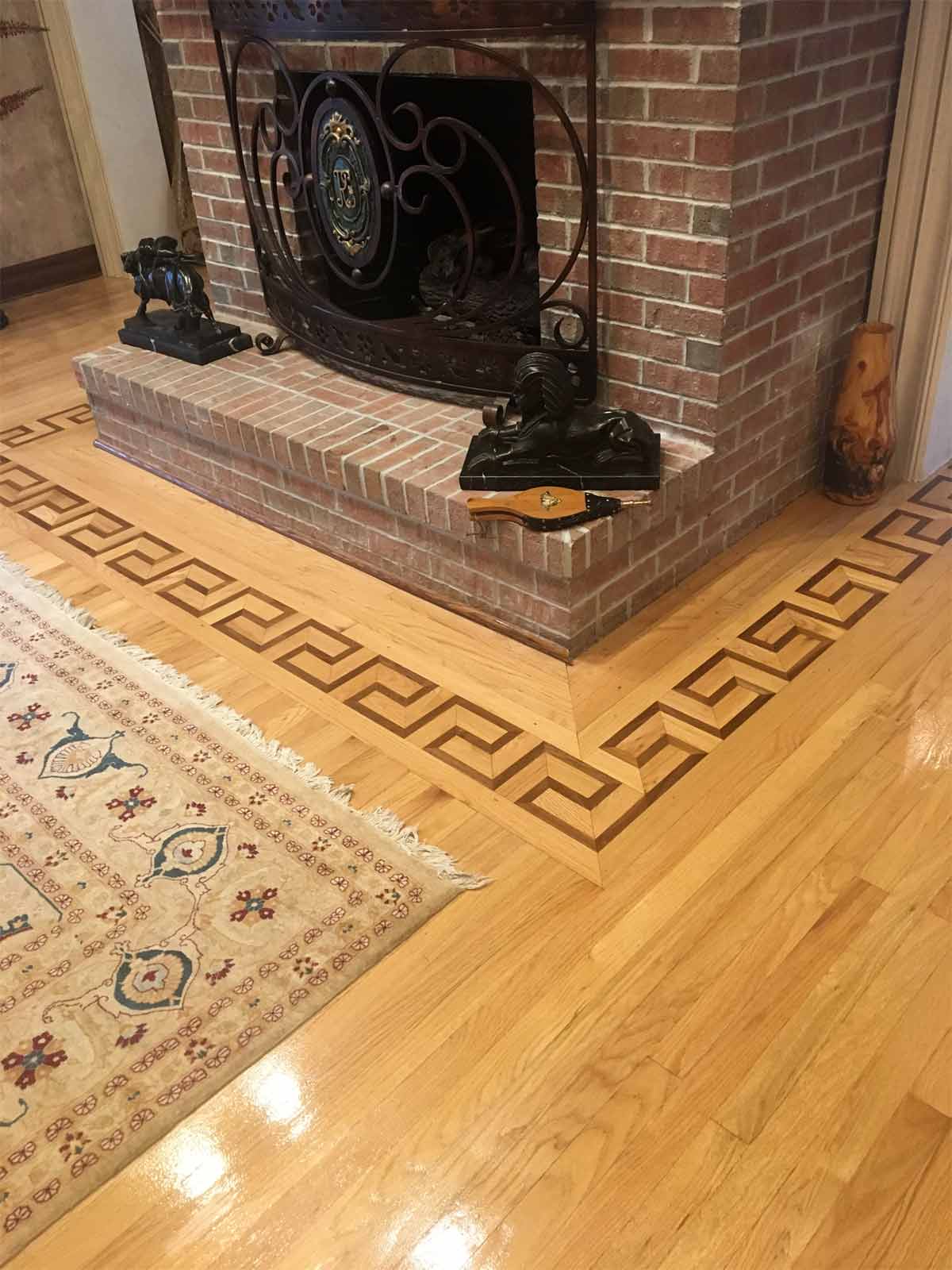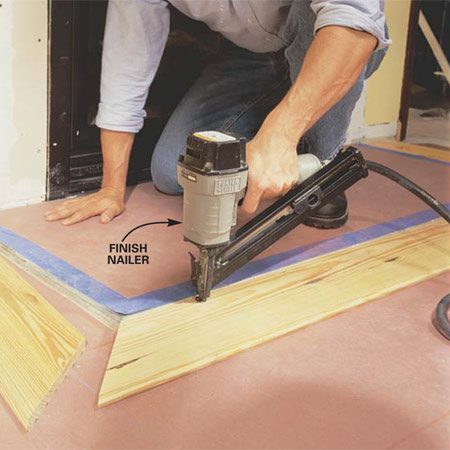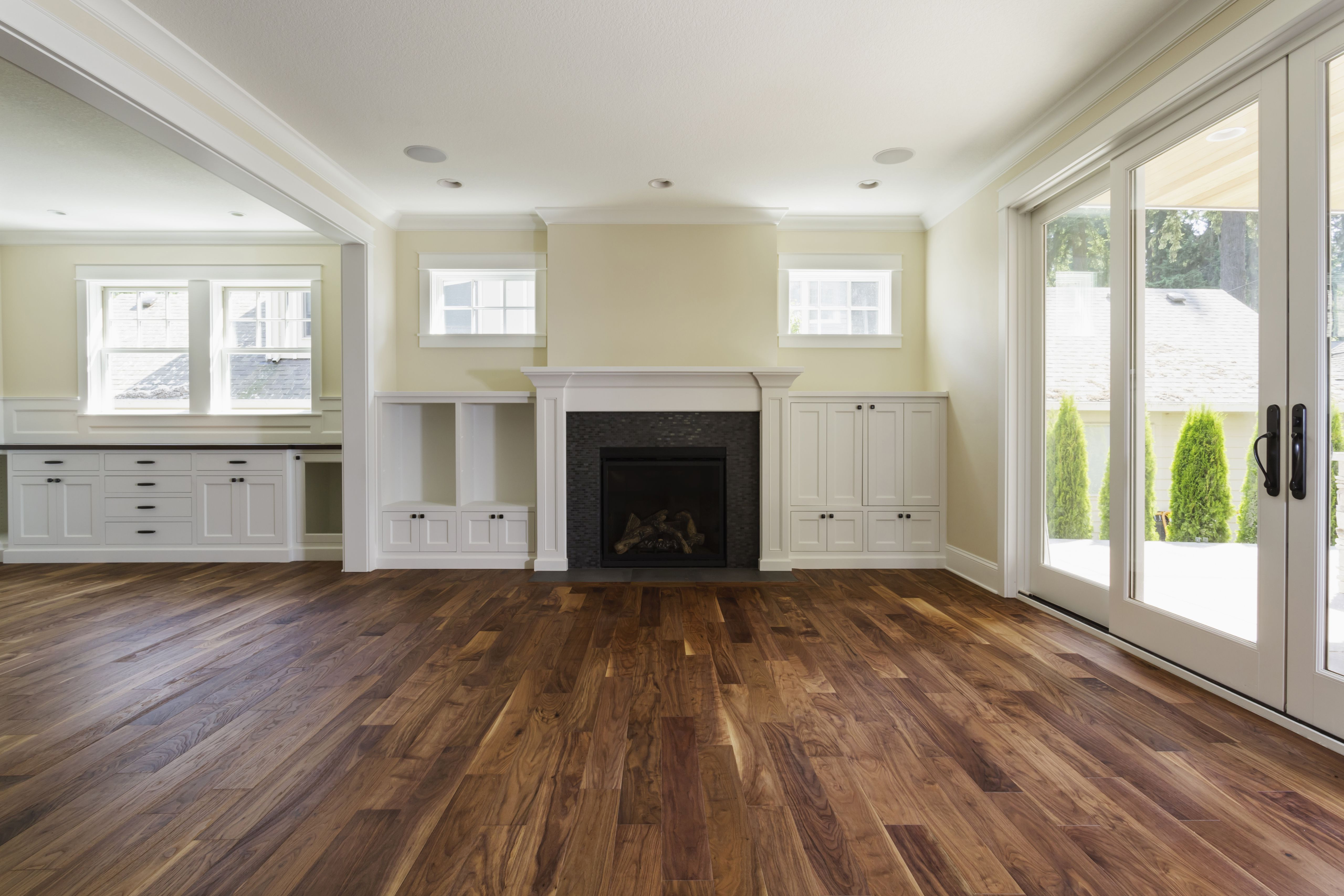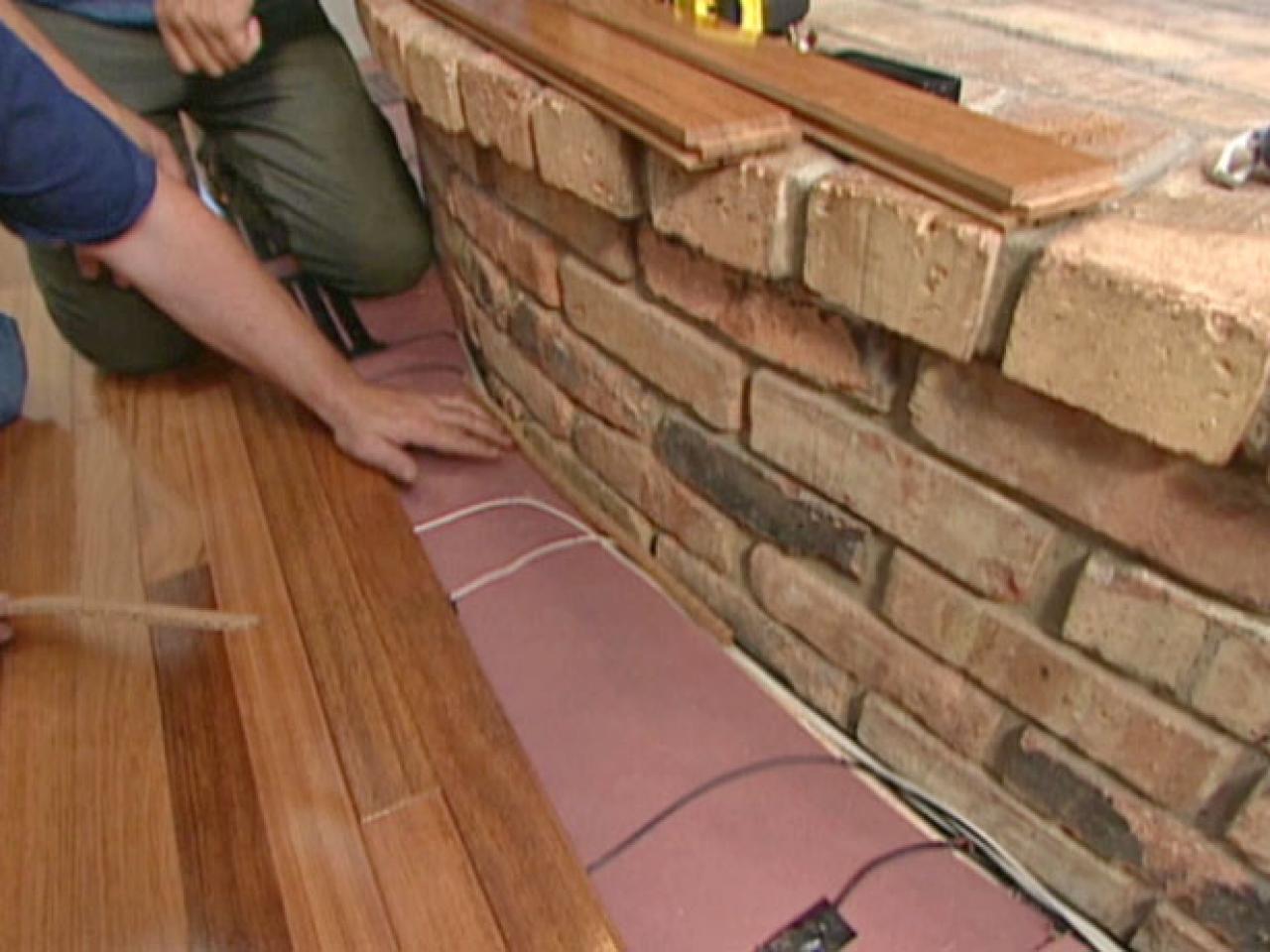The Basics of Wood Flooring Around a Fireplace
Wood flooring adds warmth and elegance to any room, and when installed around a fireplace, it enhances the cozy and inviting atmosphere of the space. However, installing wood flooring near a fireplace requires careful consideration of several factors, including safety, durability, and aesthetics. Understanding these basics is essential to ensure that the flooring not only looks great but also performs well in the unique environment created by a fireplace.
First, safety is paramount when dealing with wood flooring around a fireplace. Wood is a combustible material, so it’s crucial to maintain a safe distance between the fireplace opening and the wood flooring. Most building codes require a non-combustible hearth extension, such as stone, tile, or metal, that extends a certain distance in front of and around the fireplace. This protective barrier helps to prevent sparks or embers from reaching the wood floor, reducing the risk of fire.
The type of wood flooring used near a fireplace is another important consideration. Engineered wood flooring is often recommended over solid hardwood in these areas due to its superior stability and resistance to changes in temperature and humidity. Fireplaces can cause fluctuations in both, which can lead to expansion, contraction, and warping of solid wood floors. Engineered wood, with its multi-layer construction, is better equipped to handle these conditions, making it a more suitable choice for installation near a fireplace.
Durability is also a key factor when choosing wood flooring around a fireplace. The area immediately in front of the fireplace tends to experience higher foot traffic and exposure to dirt, ash, and debris. Choosing a durable wood species, such as oak, maple, or hickory, can help ensure that the flooring withstands wear and tear over time. Additionally, applying a strong finish to the wood can provide an extra layer of protection against scratches, stains, and moisture.
Aesthetically, wood flooring around a fireplace can create a stunning focal point in a room. The warmth and natural beauty of wood complement the visual appeal of a fireplace, whether it’s a traditional brick hearth or a sleek, modern gas insert. The choice of wood species, stain color, and plank width can all influence the overall look and feel of the space. For example, a rich, dark stain can create a dramatic contrast with a lighter fireplace surround, while a lighter wood can brighten up the room and create a more airy atmosphere.
Finally, it’s important to consider the long-term maintenance of wood flooring around a fireplace. Regular cleaning is essential to keep the wood looking its best, especially in areas prone to ash, soot, and dust. Sweeping or vacuuming frequently, along with using a damp mop for deeper cleaning, can help maintain the floor’s appearance. Additionally, it’s advisable to use a protective mat or rug in front of the fireplace to catch any debris and minimize the risk of damage to the wood.

Installation Considerations
Installing wood flooring around a fireplace involves several key considerations to ensure the final result is both safe and visually appealing. One of the first steps in the installation process is to determine the appropriate layout and design for the flooring to the fireplace. This often involves creating a layout that complements the shape and size of the fireplace while ensuring a balanced and symmetrical appearance.
One important consideration during installation is the expansion gap. Wood flooring naturally expands and contracts with changes in temperature and humidity, so it’s essential to leave an expansion gap between the edge of the flooring and the fireplace surround. This gap allows the wood to move without buckling or warping, ensuring the floor remains flat and stable over time. The gap is typically covered by baseboards or moldings, which also add a finished look to the installation.
When installing wood flooring around a fireplace, it’s also crucial to plan the transition between the flooring and the hearth. The transition area where the wood flooring meets the hearth can be handled in different ways depending on the design of the fireplace and the type of hearth material used. A common approach is to use a transition strip or molding that provides a smooth and aesthetically pleasing transition between the two surfaces. Alternatively, the wood flooring can be cut to fit tightly around the hearth, creating a seamless look.
Another key aspect of the installation is the direction of the wood planks. The orientation of the planks can significantly impact the visual flow of the room and how the fireplace is perceived as a focal point. Running the planks parallel to the longest wall in the room is a common practice, but in the area around the fireplace, some designers prefer to lay the planks perpendicular to the fireplace for a more dynamic effect. Herringbone or chevron patterns are also popular choices that can add a touch of elegance and sophistication to the space.
Preparation of the subfloor is another critical step in the installation process. The subfloor needs to be clean, dry, and level to ensure a successful installation. Any imperfections or unevenness in the subfloor can lead to problems with the flooring down the line, such as squeaking, gaps, or an uneven surface. Depending on the type of subfloor and the condition it’s in, additional steps such as sanding, leveling, or applying a moisture barrier may be necessary to prepare the surface for wood flooring installation.
Last, consider the installation method that will be used for the wood flooring. Nail-down, glue-down, and floating are the three main methods for installing wood floors, and each has its advantages and disadvantages. The choice of installation method will depend on factors such as the type of wood flooring, the subfloor material, and the specific requirements of the area around the fireplace. For example, a glue-down installation may provide added stability in areas with higher temperature fluctuations, while a floating floor can be more forgiving in areas with slight subfloor imperfections.
Safety Precautions
Safety is a primary concern when installing wood flooring around a fireplace, and taking the necessary precautions can prevent potential hazards. One of the most important safety measures is ensuring that the flooring is kept at a safe distance from the fireplace opening. This distance is usually determined by local building codes, which specify the minimum required hearth extension in front of and around the fireplace. This extension acts as a buffer zone to protect the wood flooring from heat, sparks, and embers.
In addition to the hearth extension, it’s essential to use fire-resistant materials around the fireplace to enhance safety. Non-combustible materials such as stone, tile, or metal should be used for the hearth and fireplace surround. These materials can withstand high temperatures and prevent the spread of fire, offering protection to the wood flooring and other combustible materials in the room. It’s also important to ensure that these materials are installed properly to avoid gaps or cracks where sparks could potentially reach the wood flooring.
Proper maintenance of the fireplace itself is another crucial aspect of safety. Regularly cleaning the fireplace and chimney can help prevent the buildup of soot and creosote, which are highly flammable substances. Ensuring that the fireplace is functioning correctly and that there are no cracks or leaks in the chimney or flue will also help to reduce the risk of fire. Using a fireplace screen or glass doors can provide an additional layer of protection by preventing sparks and embers from escaping the firebox.
When using a fireplace, it’s important to be mindful of the potential for heat damage to the wood flooring. Prolonged exposure to high temperatures can cause the wood to dry out, warp, or discolor. To mitigate this risk, it’s advisable to use a heat-resistant hearth rug in front of the fireplace. These rugs are designed to withstand high temperatures and can protect the wood flooring from heat and potential damage. Additionally, placing a metal or ceramic fireback in the fireplace can help to reflect heat into the room and reduce the amount of heat that reaches the floor.
Smoke detectors and carbon monoxide detectors are essential safety devices in any home with a fireplace. Installing these detectors in the same room as the fireplace can provide early warning of potential dangers, such as a fire or carbon monoxide leak. Regularly testing and maintaining these detectors is crucial to ensure they are functioning properly and can provide the necessary protection in an emergency.
Last, it’s important to educate everyone in the household about fireplace safety. This includes knowing how to properly use the fireplace, keeping flammable objects at a safe distance, and understanding what to do in the event of a fire. Having a fire extinguisher readily accessible in the room can also be a lifesaver in case of an emergency. Taking these precautions can significantly reduce the risks associated with having wood flooring around a fireplace, ensuring that your home remains safe and secure.
Design and Aesthetic Considerations
The design and aesthetic appeal of wood flooring around a fireplace plays a significant role in the overall ambiance of a room. When done correctly, the wood flooring can enhance the fireplace as a focal point and contribute to the room’s cohesive and inviting atmosphere. There are several design considerations to keep in mind when planning the installation of wood flooring around a fireplace.
One of the first design decisions to make is the choice of wood species and finish. Different wood species offer varying levels of hardness, grain patterns, and colors, all of which can impact the final look of the flooring. For example, oak is a popular choice for its durability and classic grain pattern, while walnut offers a darker, richer tone that can create a more dramatic effect. The finish applied to the wood can also affect its appearance, with options ranging from matte to high-gloss, each providing a different level of sheen and depth.
The color of the wood flooring is another important aesthetic consideration. Lighter wood tones, such as maple or ash, can create a bright and airy feel, making the space appear larger and more open. Darker wood tones, like mahogany or cherry, can add warmth and richness to the room, creating a more intimate and cozy atmosphere. When choosing a color, it’s important to consider how it will complement the fireplace surround and the overall color scheme of the room.
The layout and pattern of the wood flooring can also influence the visual impact of the fireplace. Traditional straight plank layouts are a classic choice, but more intricate patterns such as herringbone, chevron, or parquet can add a touch of elegance and sophistication to the space. These patterns can draw the eye towards the fireplace and create a sense of movement and flow in the room. Additionally, the width of the planks can affect the perception of space, with wider planks offering a more modern and expansive look, while narrower planks can create a more traditional and detailed appearance.
Another design consideration is the transition between the wood flooring and the hearth. This transition can be handled in various ways, depending on the desired look and the materials used. A clean and seamless transition can be achieved by cutting the wood flooring to fit tightly around the hearth, creating a cohesive and integrated appearance. Alternatively, using a contrasting material or color for the hearth can create a defined border that highlights the fireplace as a central feature.
Incorporating area rugs into the design is another way to enhance the aesthetic appeal of wood flooring around a fireplace. Rugs can add texture, color, and warmth to the space, while also providing protection to the wood flooring from potential damage caused by heat, sparks, or heavy foot traffic. When choosing a rug, consider its size, shape, and color in relation to the fireplace and the surrounding furniture to ensure it complements the overall design.
Lighting is another important element that can enhance the beauty of wood flooring around a fireplace. Proper lighting can highlight the natural beauty of the wood grain, create shadows that add depth and dimension, and accentuate the fireplace as a focal point. Options for lighting include overhead fixtures, wall sconces, and floor lamps, all of which can be used to create a layered and balanced lighting scheme that enhances the ambiance of the room.
Maintenance and Care Tips
Maintaining and caring for wood flooring around a fireplace is essential to preserve its beauty and extend its lifespan. The unique environment created by a fireplace requires special attention to ensure that the wood flooring remains in good condition despite the challenges of heat, ash, and foot traffic.
Regular cleaning is the foundation of good maintenance. Dust, dirt, and debris can accumulate quickly in areas near a fireplace, especially during the colder months when the fireplace is in frequent use. Sweeping or vacuuming the floor regularly helps to remove loose dirt and prevent scratches. For a deeper clean, a damp mop can be used, but it’s important to ensure the mop is only slightly damp, as excessive moisture can damage the wood. Using a wood floor cleaner specifically designed for your type of flooring can also help maintain its finish and luster.
Protecting the wood flooring from heat and sparks is another key aspect of maintenance. Placing a hearth rug or fire-resistant mat in front of the fireplace can provide a protective barrier between the flooring and any embers or sparks that may escape from the fire. These rugs are designed to withstand high temperatures and can help prevent burn marks or heat damage to the wood. Additionally, using a fireplace screen can prevent larger sparks from reaching the floor and causing damage.
Humidity control is also important for maintaining wood flooring around a fireplace. The heat generated by a fireplace can cause the air in the room to become dry, which can lead to the wood flooring drying out and shrinking. Using a humidifier in the room can help maintain a stable humidity level, reducing the risk of gaps forming between the planks. It’s also important to monitor the temperature in the room and avoid exposing the wood flooring to extreme heat, as this can cause the wood to warp or crack.
Addressing spills and stains promptly is crucial to prevent damage to the wood flooring. Ash, soot, and other debris from the fireplace can cause stains if left on the floor for too long. Wiping up spills immediately with a soft, dry cloth can prevent stains from setting in. For tougher stains, a wood floor cleaner can be used, but it’s important to follow the manufacturer’s instructions to avoid damaging the finish. If the stain is particularly stubborn, consulting a professional may be necessary to restore the floor’s appearance.
Refinishing the wood flooring periodically can help maintain its appearance and protect it from wear and tear. Over time, the finish on wood flooring can become worn, especially in high-traffic areas near a fireplace. Refinishing involves sanding down the top layer of the wood and applying a new finish, which can restore the floor’s original beauty and provide a fresh layer of protection. Depending on the type of wood flooring and the level of wear, refinishing may be needed every few years to keep the floor looking its best.
Finally, it’s important to be mindful of how furniture is placed around the fireplace. Heavy furniture can dent or scratch the wood flooring, so using furniture pads or coasters under the legs can help protect the floor. Additionally, rearranging the furniture periodically can help distribute wear more evenly across the floor, preventing certain areas from becoming overly worn or damaged.
Common Mistakes to Avoid
Ignoring Building Codes and Safety Regulations: One of the biggest mistakes is neglecting to adhere to local building codes and safety regulations regarding the installation of wood flooring near a fireplace. Failing to install a proper hearth extension or using combustible materials too close to the fireplace can create a significant fire hazard.
Choosing the Wrong Type of Wood Flooring: Another common mistake is selecting solid hardwood for areas around a fireplace without considering the potential for temperature and humidity fluctuations. Engineered wood is often a better choice in these areas due to its stability and resistance to warping.
Neglecting the Expansion Gap: Failing to leave an expansion gap between the wood flooring and the fireplace surround can lead to buckling or warping as the wood expands and contracts. This gap is crucial for allowing the wood to move naturally without damaging the floor.
Improper Transition Between Flooring and Hearth: Not planning a smooth transition between the wood flooring and the hearth can result in an unsightly and uneven surface. Using a transition strip or molding can help create a seamless look and prevent tripping hazards.
Overlooking the Importance of Heat-Resistant Rugs and Mats: Skipping the use of heat-resistant hearth rugs or mats can lead to heat damage and burn marks on the wood flooring. These protective barriers are essential for preserving the floor’s appearance and integrity.
Inadequate Maintenance: Neglecting regular maintenance of the wood flooring around a fireplace, such as cleaning, humidity control, and refinishing, can lead to premature wear and damage. Consistent care is essential to keep the flooring looking its best and extending its lifespan.
Is it safe to install wood flooring near a fireplace?
Yes, it is safe to install wood flooring near a fireplace as long as certain precautions are taken. A non-combustible hearth extension must be installed to protect the wood flooring from sparks and heat. Additionally, using engineered wood flooring can provide added stability in areas prone to temperature fluctuations.
What type of wood flooring is best for areas around a fireplace?
Engineered wood flooring is often the best choice for areas around a fireplace due to its resistance to changes in temperature and humidity. It is less likely to warp or expand compared to solid hardwood, making it a more durable option in the unique environment created by a fireplace.
How do I maintain wood flooring near a fireplace?
Maintaining wood flooring near a fireplace involves regular cleaning to remove dust, ash, and debris. Using a hearth rug or heat-resistant mat can protect the floor from heat damage. Additionally, controlling the humidity in the room and refinishing the floor periodically can help preserve its appearance and extend its lifespan.
Can wood flooring around a fireplace warp or crack?
Wood flooring around a fireplace can warp or crack if it is exposed to extreme temperatures or if the humidity levels in the room fluctuate significantly. Engineered wood flooring is less prone to these issues, but it’s still important to take precautions such as using a humidifier and avoiding direct heat exposure.
What are the design options for wood flooring around a fireplace?
There are numerous design options for wood flooring around a fireplace, including different wood species, finishes, and patterns. Homeowners can choose from a variety of colors and plank widths to complement the fireplace and enhance the overall aesthetic of the room. Patterns such as herringbone or chevron can add a touch of elegance to the space.
Do I need a professional to install wood flooring around a fireplace?
While it is possible to install wood flooring around a fireplace as a DIY project, hiring a professional is often recommended. A professional installer will have the expertise to handle the unique challenges of working around a fireplace, such as ensuring proper expansion gaps and creating a seamless transition between the flooring and the hearth.
Related Posts:









